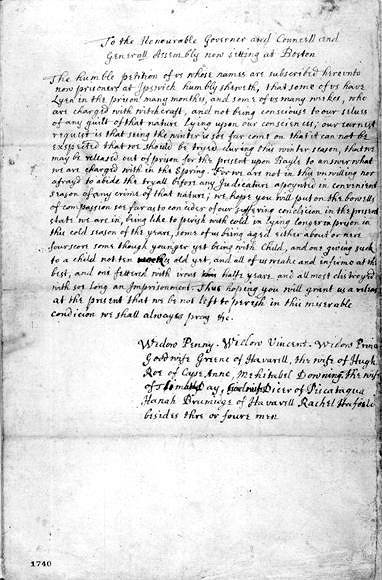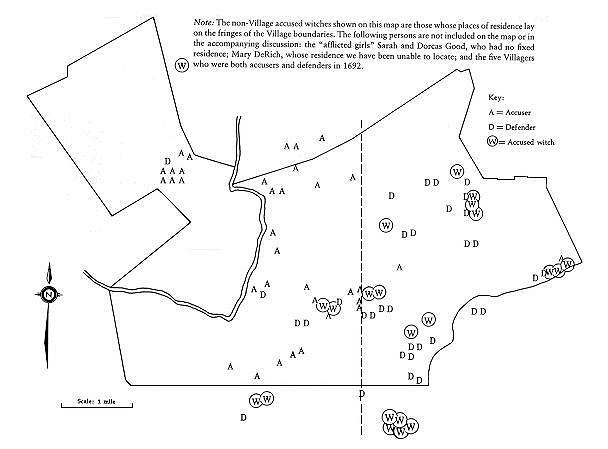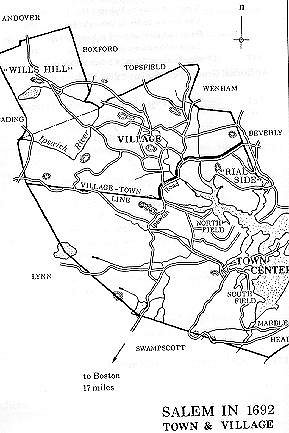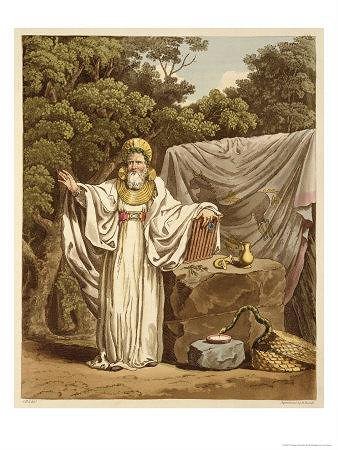Beyond Tiki, Bilge, and Test / Bilge
Because All Hallows' Evening approaches...
Pages: 1 6 replies
|
TG
The Gnomon
Posted
posted
on
Fri, Oct 19, 2007 1:15 PM
Nobody here has asked me to break it down, but being a gnomon descended from a long line of gnomons, I seem to get asked about this every year around this time, so... Does the following statement ring true? Halloween is a time of ghosts, goblins, and evil spirits, of chaos, horror and fear; conjured up by the witches of yesteryear and celebrated to the present day largely due to marketing ploys of the corporate world. Although there is some truth in that statement, the reality is considerably different. Halloween is a time when spirits of past and present are most easily united or reunited. Pagans from deep antiquity up to the present day were and are aware of such things. There is nothing Satanic about Halloween. While Halloween is a money-maker for corporations worldwide, pagans are the ones who actually maintain the traditions. There are many different kinds of pagans, most of which can be referred to as witches. All Wiccans are witches, but not all witches are Wiccan. Most witchcraft is not Wicca, although today Wicca seems to be the most popular, especially, as it is the most accessible to the general public. Wicca is a neopagan resurgence of witchcraft that began developing into a variety of branches beginning in the late 1950's to early 1960's, largely influenced by Gerald Gardner's foray into witchcraft in the late 40's and 50's that presumably originated from a secret coven of British witches with mesopagan lineage. Essentially, any neopagan witchcraft you might encounter will be Wiccan. There are probably 15 or 20 different classifications of witchcraft, some overlapping others. Wicca applies to several of them, but not to any mesopagan or paleopagan traditions. Witches throughout history were pagans whose practices would from time to time disturb mainstream society to the point of lashing out with deadly violence. That violence was, of course, justified in the name of cleansing the unholy. This happened to the witches of Salem, Massachusetts and throughout New England in colonial times. Here's a petition from some accused Salem witches seeking bail. Bet they didn't get it.
Here's a map of Salem showing the locations of accused witches, accusers, and defenders; a map of the area at the time showing the village and the town; plus, a more or less current aerial view. Ultimately, trials took place and the hanging tree was a busy place.
We celebrate Halloween on October 31, but the ancient holiday was a three day event, October 31 through November 2. Among the paleopagans of the world, the Druids celebrated high holidays whose evolution has come to define the pagan calendar. New Year for pagans is a magical time that exists between the end of Summer (Light Half of the Year) and the beginning of Winter (Dark Half of the Year). The New Year holiday is called Samhain (pronounced SOW-en). In an effort to downplay any value to pagan customs, Christians would claim pagan holidays and popular traditions as being their own. The festival of Samhain became "All Hallows' Evening (October 31), All Saints' Day (November 1), and All Souls' Day (November 2). All Hallows' Evening was contracted into Hallow-e'en, and then simply Halloween. Here's a rendering of an Arch Druid conducting a ritual.
Druids were an extremely organized people with an exceptional appreciation for the order in the Universe, yet at the time of Samhain, between the Summer and the Winter, they celebrated by reveling in chaos. They would do all sorts of mischievous pranks and championed odd behavior for that one time of the year. One odd thing they would do was to go door to door begging for food. Hee! Hee! Hee! How silly. This practice evolved into gangs of young men and older boys blowing horns and going farmhouse to farmhouse extorting money and goodies, in good fun for all concerned. Makes you want to say, "Trick or treat!" One of the most important aspects of Samhain is that it commemorates a time of year when the "veil" that exists between the world of mortal being and the world of the spiritual beyond is at its thinnest. As such, Samhain is a celebration of the union and reunion of the spirits of mortal beings and ancestors who have passed on. Now for non-pagan society, spiritual visitation from beings that have died has always been really freaky. For them, the time of year is scary, so they deal with it more in the form of ridicule. But to pagans, the festival honors those who have passed before, but rather as living spirits from the past. This of course, they do year round, but when the veil is as thin as it is at Samhain (end of Summer), it calls for a holiday. The ancient Druids had four high holidays, Samhain, Oimelc, Beltane, and Lughnasadh. Later, these became the four Major High Days with four Minor High Days, the synodic midpoints between the Major High Days, marking the transition from each of the four seasons to the next. It is a relatively recent practice (a century or so ago) to refer to the four Major High Days as Fire Festivals. These celebrations are based on astronomical events and how they affect nature. As the pagan societies that cultivated these traditions were situated in the Northern hemisphere, the dates are of Northern Hemispheric orientation. In the Southern Hemisphere, the dates are shifted such that Samhain is considered to be on about May 1, Yule is about June 21, and so on. Keep in mind, the dates we use, even in the Northern hemisphere are somewhat arbitrary, as we set the dates in stone for the sake of the calendar and planning. In ancient times, each year's High Days were determined by the actual positions of the Sun, Moon, and Earth. When it comes to the veil between the worlds, in the Northern Hemisphere it is thinnest around November 1, whereas in the Southern Hemisphere it is thinnest around May 1. This suggests that the relationship between the two worlds is a cosmic arrangement (regulated by the same forces that control the seasons—Earth, Moon, Sun, and the Galaxy). The dynamics in the tropics are different than in the North and South, as you might expect in a zone between two opposites. How can you tell when the veil is thin? When contact between yourself and those who have passed is easiest, most frequent, and especially when the contact is unsolicited by you. The fact that the veil is thin is a matter of nature, not something invented by pagans. Everyone has the predisposition to encounter living spirits that have exercised their mortality. To most, the phenomenon is rather unnerving and, at times, can be bone chilling. The fact that pagans from antiquity have recognized, studied, trained themselves to facilitate, and celebrated this glorious phenomenon is part of what has made witches, wizards, and pagans of all sorts seem evil and unholy to those who lack understanding. Here is a summary of the eight High Days: Samhain (SOW-en)—October 31 – November 2 As the time grows near to Samhain, be aware of your spiritual visitors. They know how to party! Big time! Beyond time! If you can, try not to freak out should you be fortunate enough to find yourself in their presence (or vice versa). They're into chillin' with you, so if you freak out, they'll leave. Most likely you'll encounter them in your dreams, which are surreal enough to where you won't realize they are spirits from the past until you wake up anyway. Most people are too distracted to notice the presence of spiritual entities during the day, so they are a little more attentive at night. But even at night, most people in modern times are still heavily distracted. In olden days there was no TV or radio or much of anything to do but stay at home. The time when people have the fewest distractions is when they are sleeping, so you can expect your dreams to be where you will encounter most of your contacts, unless you have natural sentiency of subtle energy or have trained and developed such sentiency. Certain mind expanding ...err... um... supplements tend to break down internal barriers that impede the operation of one's natural sentient abilities. Not advising or prescribing anything...just saying. BTW, the veil is not so thick that you cannot make such contacts year round, especially, if you have some experience in communicating between worlds. Samhain is a good time of year to gain that kind of experience because nature has provided an easy gateway by weakening the veil at this time of year. I hope you all enjoy your Festival of Samhain. [ Edited by: The Gnomon 2007-10-30 13:14 ] |
|
V
VampiressRN
Posted
posted
on
Sat, Oct 20, 2007 11:37 AM
Great post Gnomon and I really love the map indicating the location of witches. Those hags...you try running them out of town, hanging them, burning them and still.....surrounded by witches. I love Halloween....even all the commercialism. I get sucked into buying all sorts of stuff. This year I invested in Pirate decor, but I have great Vampire/graveyard stuff too. I think I may be indicated as a "V" on the map of Lincoln. |
|
TG
The Gnomon
Posted
posted
on
Sat, Oct 20, 2007 2:50 PM
Virgin, eh? |
|
TG
The Gnomon
Posted
posted
on
Wed, Oct 24, 2007 1:05 PM
I'm trying to figure out just when vampires, ghosts, goblins, monsters, and creepy things became part of the Halloween tradition. Haven't has the time to run it down yet. Certainly, witches were accused of vampirism, satanism, etc. dating back centuries before the beginning of the Christian Era, but that is a kind of long-standing political tactic that is still used to this day. Witches weren't the only ones to be so accused. Just about everyone that was out of favor with the ruling class that could be tagged as an evil heathen was subject to such charges. I think it stuck with witches because of their acceptance, appreciation, and honoring of spirits that had passed as being still living (albeit in the world beyond). Trick or Treat was an invention of the 1930s—the expression, that is. Dressing up in costumes is a reflection of the fact that in ancient times during Samhain men would dress up like women and women like men (how times have changed). Not everyone did that, but is was just one of many ways to express the chaotic nature and whimsy of the holiday. But dressing up as different freaky characters is more recent. A lot of more modern Halloween interpretations came about in the 17th and 18th Centuries CE, but if I can dig it up...er..I mean, exhume the info, I think the costumes deal is all 20th century. Certainly, pagans, who were country folk, would never think of dressing up like Vlad the Impaler, an aristocratic type. Nor would they ever take on the persona of anything evil (not to suggest that Vlad wasn't). They did perform mischievous deeds during the lunacy of the Samhain festival. They'd open closed pasture gates and sometimes move livestock around to places where they shouldn't be—things like that. Nothing that would leave a mark. Just oddball stuff that would make people laugh the next day, even if it was some work recovering from the pranks. The actual door to door (farmhouse to farmhouse) trick or treat activity (not called Trick-or-Treat until the 1930s) was kind of a thrill for the women and young kids of the day. Back 2500 years ago, you didn't open your door at night without good reason, especially, if there were strangers about. When the gangs of boys would sound their horns to announce that they were approaching, the women would prepare a packet of small foods and/or money. When the gang reached their door, the woman would hand the packet out through the narrow slit in the barely open door, into the darkness where it would be snatched away. No small talk with the visitors. That's old time entertainment ain't it. Dammit! Spelling, of course. [ Edited by: The Gnomon 2007-10-24 13:09 ] |
|
MA
Mouse Art
Posted
posted
on
Wed, Oct 24, 2007 8:19 PM
........Years ago my sister researched our family tree. It appears some of my relatives were burned at the stake on the east coast for, well shall we say, unexplained events................Remy |
|
TG
The Gnomon
Posted
posted
on
Thu, Oct 25, 2007 11:39 AM
Hey, Remy Sorry to hear about your ancestors' misfortune. Were they slaves? The penalty for witchcraft in the Colonies was a trip to the gallows (not the hanging tree as an earlier comment I made probably suggested). Burning at the stake in colonial times was conducted occasionally by Native American tribes and, among the colonists, was reserved for slaves convicted of arson or certain kinds of conspiracy against their masters. Actually, I think the law went on the books that anyone convicted of arson could be burned at the stake, but I'm pretty sure it was only ever used on slaves. If your relatives were not slaves and they didn't really piss off any Native American tribes, it's hard to speculate how they might have ended up in that situation. It wouldn't have been for witchcraft. If it had, that would have been unusual enough to make it into the history books, so you wouldn't have to wonder. You'd know. Did your sister ever find out what those "unexplained events" were. If it turns out that they were executed for witchcraft, then it was most likely extrajudicial (like a mob lynching is). But stake burning was a much bigger deal than hanging. Hanging was pretty cheap and easy, and could be done by any size mob even if nobody knew how to tie a hangman's knot. Burning at the stake required a lot of work and expense; erecting a stake in an open space and surrounding it with lots of valuable firewood. A lynching could be done with only a small gang being aware of what was going on. A burning at the stake sent up huge flames and billowing smoke for miles. Just about impossible to keep secret. My point being, if it was a burning at the stake, most likely it was sanctioned by the court and the court would have prescribed hanging for witchcraft. Hope you are able to learn what happened. It's puzzling. |
|
TG
The Gnomon
Posted
posted
on
Mon, Oct 29, 2007 12:00 PM
M'kay. I've dug around, excavated, and exhumed to the extent that time has permitted, but I haven't nailed the coffin on exactly when non-pagan imagery was interred in the Hallowe'en tradition. Here's a better than average guestimate, though. Bobbing for apples was an old tradition as was making scarecrows and jack o'lanterns. Jack o'Lanterns were originally made out of turnips (and other big roots), but were converted to pumpkins when the holiday migrated to the US. Pumpkin carving was already an autumn tradition in the US and they made a much nicer lantern than a turnip. Guising in olden days was done by dressing up like ghosts (spirits of those who had passed actually) as well as charicatures of witches and wizards (as the tradition became very popular to non-pagans). We know that Hallowe'en was largely ignored (intentionally) in the US until the Great Potato Famine in Ireland brought in lots of Irish immigrants, who had been celebrating it since practically forever. So Hallowe'en celebration in the US began it's ascent from relative obscurity to great popularity in the mid-1800s. My guess is that dressing up as anything you wanted within a whole spectrum of characters from monsters to princesses to clowns to political figures and other celebrities was a post-World-War-I development. In hard times, people dressed up mainly as bums or just in clothing around the house that was not typical attire. When times got better, they could afford to get fancy. As far as masks are concerned, I think that dressing up in costumes at all reminded people of masques (masquerades of 17th Century Europe). That's probably when a lot of non-pagan imagery entered the fray—like vampires for example. Commercialization of Hallowe'en began at about the turn of the 20th Century CE and as the US was recovering from the 1929 stock market crash that started the Depression, Hallowe'en costumes began being sold in stores. I don't know who were early costume manufacturers. Nowadays they're all made in China, Hong Kong, or Taiwan. I know that Dennison Manufacturing (which is now part of Avery-Dennison—as in Avery labels) made Hallowe'en party decorations back then, but I don't know who cornered the market on cheap costumes. I think when the US was under the pressures of the Depression and the World Wars, the annual traditions were relegated mainly to kids. Certainly, adults have their share of Hallowe'en parties—often their best parties of the year. But going door to door guising and extorting goodies among adults definitely declined. Especially, when the catch phrase "Trick-or-Treat" was coined around 1950, it was intended to appeal to kids. It was probably coined by a candy company, but I don't know. I also like the annual Hallowe'en hype, even though I celebrate Samhain by connecting with spirits of ancestors. I'm fond of all the stupid commercials using Hallowe'enish puns, creaking gates, and primal screams. But I particularly enjoy seeing little 1-year olds dressed up like some lap dog as they make their Trick-or-Treat rounds. Kids that young are pretty much in shock. They are confused about all of the other weird looking kids running around; they don't know why they are wearing some fluffy suit with antennae that light up; it freaks them out to get close to strangers and everybody is a stranger; they have to reach down into a bowl to pull out something unknown (even if it is candy); people make a big deal about how cute they look (so obviously the disguise doesn't work—can't blend in among the other weirdos), then they have to go to the next house and do it all over again. They're in a stupor the whole time. |
Pages: 1 6 replies





